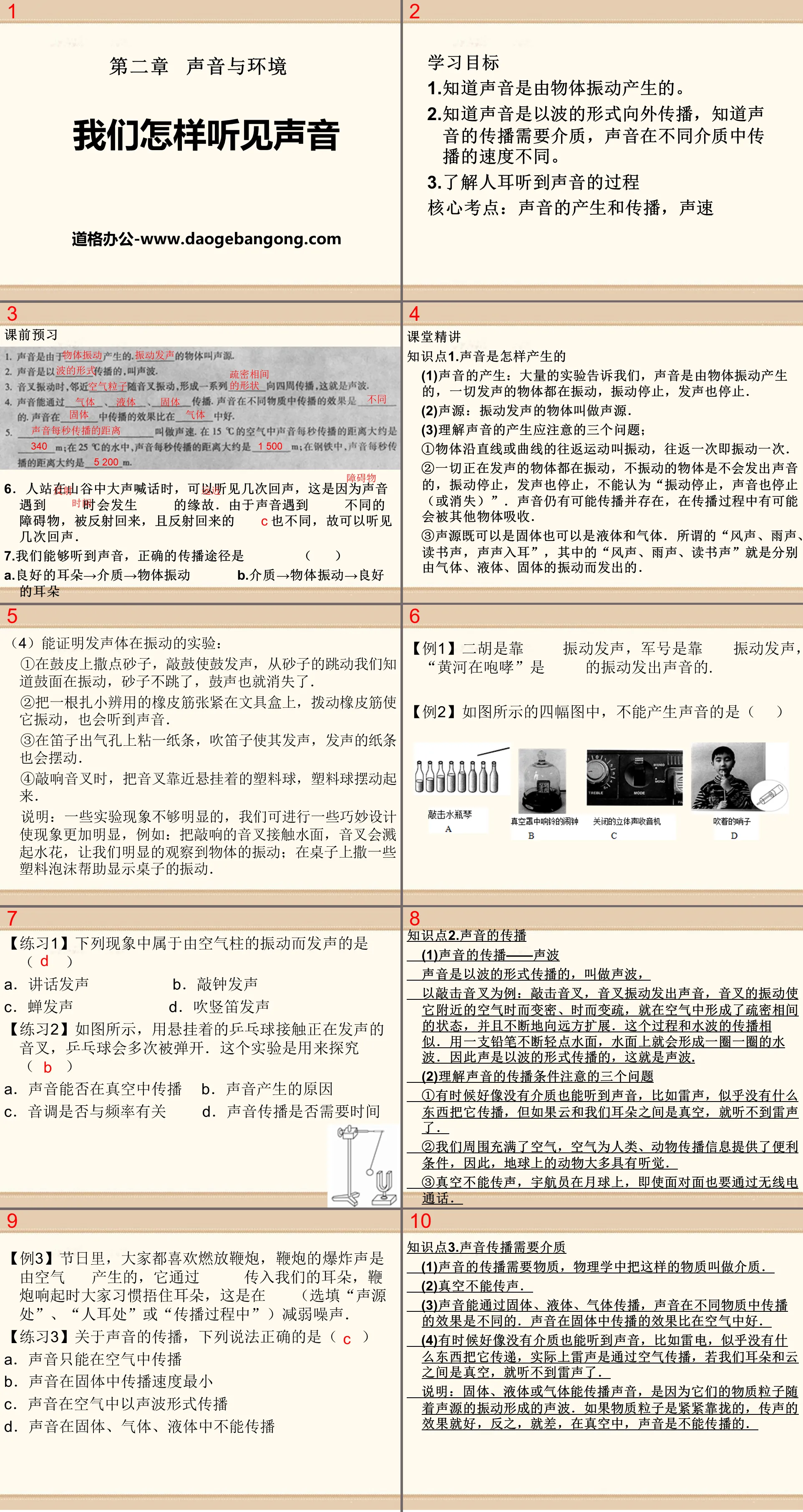People's Education Edition Physics for Grade 8, Volume 2
People's Education Edition Physics for Grade 8, Volume 1
People's Education Edition Ninth Grade Physics Complete Book
Shanghai Science Edition Ninth Grade Physics
Shanghai Science Edition 8th Grade Physics
Beijing Normal University eighth grade physics volume one
Lu Jiao Edition Ninth Grade Physics Volume 2
Beijing Normal University Ninth Grade Physics Volume 1
Lu Ke Edition High School Physics Compulsory Course One
Lu Jiao Edition Ninth Grade Physics Volume 1
People's Education Press High School Physics Compulsory Course II
Guangdong and Shanghai Edition Ninth Grade Physics Volume 1
Beijing Normal University Ninth Grade Physics Volume 2
Lu Jiao Edition Eighth Grade Physics Volume 2
Lu Jiao edition eighth grade physics volume 1
Guangdong and Shanghai Edition Ninth Grade Physics Volume 2

| Category | Format | Size |
|---|---|---|
| Guangdong and Shanghai version of eighth grade physics volume one | pptx | 6 MB |
Description
"How We Hear Sound" Sound and Environment PPT Courseware 2
learning target
1. Know that sound is produced by the vibration of objects.
2. Know that sound propagates outward in the form of waves, that sound propagation requires a medium, and that sound propagates at different speeds in different media.
3. Understand the process of hearing sound by human ears
Core test points: production and propagation of sound, speed of sound
Lectures in class
Knowledge point 1. How sound is produced
(1) Generation of sound: A large number of experiments tell us that sound is produced by the vibration of objects. All sound-producing objects are vibrating. When the vibration stops, the sound production also stops.
(2) Sound source: An object that vibrates and produces sound is called a sound source.
(3) Three issues that should be paid attention to when understanding the generation of sound;
①The back-and-forth motion of an object along a straight line or curve is called vibration. One round-trip motion is one vibration.
② All objects that are making sound are vibrating. Objects that are not vibrating will not make sound. When the vibration stops, the sound will stop. It cannot be said that "when the vibration stops, the sound will stop (or disappear)". Sound may still propagate and exist, and may be absorbed by other objects during the propagation process.
③The sound source can be either solid, liquid or gas. The so-called "the sound of wind, rain, and reading is heard in the ears", among which the "sound of wind, rain, and reading" are respectively emitted by the vibration of gas, liquid, and solid.
(4) Experiments that can prove that the sound-emitting body is vibrating:
① Sprinkle some sand on the drum head and beat the drum to make the drum sound. From the beating of the sand, we know that the drum head is vibrating. If the sand stops jumping, the sound of the drum will disappear.
②Tighten a rubber band on the pencil case, stir the rubber band to make it vibrate, and you will hear a sound.
③ Stick a piece of paper on the air outlet of the flute, blow the flute to make it sound, and the sounding paper piece will also swing.
④When ringing the tuning fork, bring the tuning fork close to the hanging plastic ball, and the plastic ball will swing.
Note: For some experimental phenomena that are not obvious enough, we can make some ingenious designs to make the phenomena more obvious. For example, if we put a ringing tuning fork in contact with the water, the tuning fork will splash water, allowing us to clearly observe the vibration of the object; Some plastic foam helps show the table's vibrations.
[Exercise 1] Among the following phenomena, the sound is caused by the vibration of the air column ( )
A. Speech and vocalization B. Ring the bell to make a sound
C. Cicada makes a sound D. Play the recorder to make sounds
[Exercise 2] As shown in the picture, use a hanging ping pong ball to touch the sounding tuning fork. The ping pong ball will be bounced away many times. This experiment is used to explore ( )
A. Can sound propagate in a vacuum B. causes of sound
C. Whether pitch is related to frequency D. Does sound take time to travel?
Knowledge point 2. Propagation of sound
(1) Propagation of sound—sound waves
Sound travels in the form of waves, called sound waves.
Take knocking a tuning fork as an example: knocking a tuning fork causes the tuning fork to vibrate and make a sound. The vibration of the tuning fork makes the air near the tuning fork sometimes denser and sometimes thinner, forming a state of alternating density and density in the air, which continues to expand into the distance. . This process is similar to the propagation of water waves. Use a pencil to tap the water surface continuously, and circles of water waves will form on the water surface. Therefore, sound travels in the form of waves, which are sound waves.
(2) Three issues to pay attention to when understanding the propagation conditions of sound
① Sometimes it seems that sound can be heard without a medium, such as thunder. It seems that nothing is spreading it. But if there is a vacuum between the cloud and our ears, thunder cannot be heard.
②We are surrounded by air, which provides convenient conditions for humans and animals to spread information. Therefore, most animals on the earth have hearing.
③ Sound cannot be transmitted in a vacuum. Astronauts on the moon have to communicate by radio even if they are face to face.
[Example 3] During festivals, everyone likes to set off firecrackers. The explosion sound of firecrackers is produced by the air _____. It is transmitted to our ears through _____. When the firecrackers sound, everyone is used to covering their ears. This is _ ____ (optional "at the sound source", "at the human ear" or "during the propagation process") reduce noise.
[Exercise 3] Regarding the propagation of sound, which of the following statements is correct ( )
A. Sound can only travel in the air
B. The speed of sound propagation in solids is minimum
C. Sound travels in the air as sound waves
D. Sound cannot propagate in solids, gases, and liquids
Knowledge point 3. Sound propagation requires a medium
(1) The propagation of sound requires material. In physics, such material is called a medium.
(2) Sound cannot be transmitted in a vacuum.
(3) Sound can propagate through solids, liquids, and gases, and the effects of sound propagation in different materials are different. Sound propagates better in solids than in air.
(4) Sometimes it seems that sound can be heard without a medium, such as thunder and lightning. It seems that nothing is transmitting it. In fact, thunder propagates through the air. If there is a vacuum between our ears and the cloud, we cannot hear thunder. Yes.
Explanation: Solids, liquids or gases can transmit sound because their material particles vibrate with the sound source to form sound waves. If the material particles are close together, the sound transmission effect will be good; otherwise, the sound transmission effect will be poor. In a vacuum, sound cannot propagate.
[Example 4] When a disaster occurs, a good way for people trapped in the ruins of a building to seek help from the outside world is to knock on an iron pipe. This method uses the energy of the iron pipe ( )
A. Voice transmission B. Heat transfer c. Conduct electricity D. ventilation
[Exercise 4] As shown in the picture, place the ringing alarm clock in the glass cover and gradually evacuate the air. The sound of the alarm clock will gradually become smaller until no sound can be heard. This experiment shows ( )
A. Sound travels in the form of waves
B. Sound is produced by the vibration of objects
C. Sound waves must pass through a medium to propagate
D. Different media propagate sound at different speeds
Keywords: Sound and environment teaching courseware, How do we hear sound teaching courseware, Guangdong and Shanghai version eighth grade physics PPT courseware download, eighth grade physics slide courseware download, Sound and environment PPT courseware download, How do we hear sound PPT courseware download, .PPT format;
For more information about the PPT courseware "Sound and Environment How Do We Hear Sound", please click the Sound and Environment ppt How Do We Hear Sound ppt tag.
"How We Hear Sound" Sound and Environment PPT Courseware:
"How We Hear Sound" Sound and Environment PPT Courseware Teaching Objectives 1. Know that sound is produced by the vibration of objects. 2. Know that sound propagates outward in the form of waves; know that the propagation of sound requires a medium, and different media propagate sound at different speeds. three..
File Info
Update Time: 2024-11-12
This template belongs to Physics courseware Guangdong and Shanghai version of eighth grade physics volume one industry PPT template
"How We Hear Sound" Sound and Environment PPT Courseware 2 Simple campus recruitment activity planning plan summary enterprise and institution recruitment publicity lecture PPT template is a general PPT template for business post competition provided by the manuscript PPT, simple campus recruitment activity planning plan summary enterprise and institution recruitment promotion Lecture PPT template, you can edit and modify the text and pictures in the source file by downloading the source file. If you want more exquisite business PPT templates, you can come to grid resource. Doug resource PPT, massive PPT template slide material download, we only make high-quality PPT templates!
Tips: If you open the template and feel that it is not suitable for all your needs, you can search for related content "How We Hear Sound" Sound and Environment PPT Courseware 2 is enough.
How to use the Windows system template
Directly decompress the file and use it with office or wps
How to use the Mac system template
Directly decompress the file and use it Office or wps can be used
Related reading
For more detailed PPT-related tutorials and font tutorials, you can view: Click to see
How to create a high-quality technological sense PPT? 4 ways to share the bottom of the box
Notice
Do not download in WeChat, Zhihu, QQ, built-in browsers, please use mobile browsers to download! If you are a mobile phone user, please download it on your computer!
1. The manuscript PPT is only for study and reference, please delete it 24 hours after downloading.
2. If the resource involves your legitimate rights and interests, delete it immediately.
3. Contact information: service@daogebangong.com
"How We Hear Sound" Sound and Environment PPT Courseware 2, due to usage restrictions, it is only for personal study and reference use. For commercial use, please go to the relevant official website for authorization.
(Personal non-commercial use refers to the use of this font to complete the display of personal works, including but not limited to the design of personal papers, resumes, etc.)
Preview










